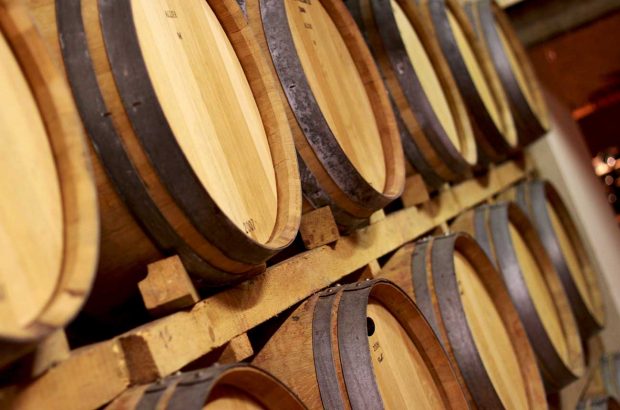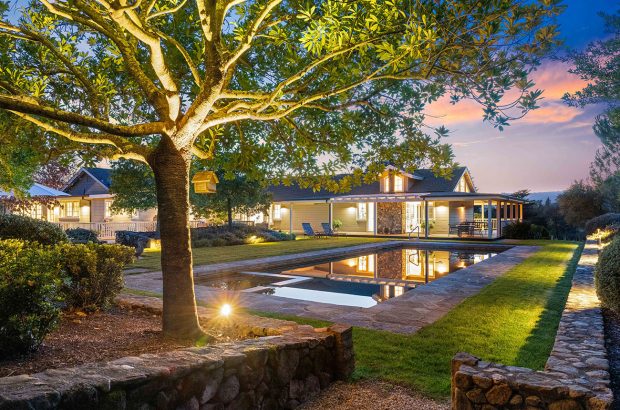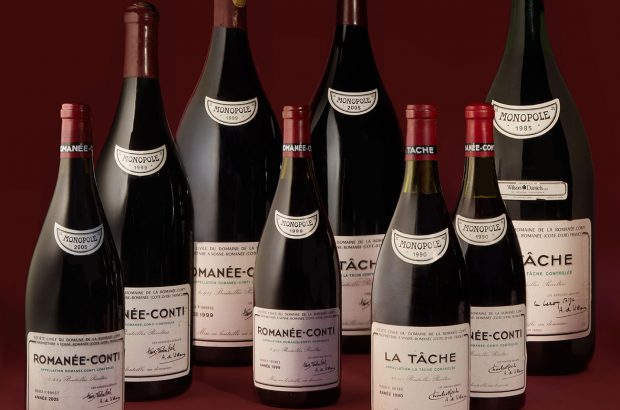We can, I guess, all agree on this: there will never be enough good red Burgundy to keep the wine drinkers of the world happy.
Dolceacqua in Liguria. Image credit: Andrew Jefford
One solution is to plant more Pinot. Done: and the results (from California and Oregon, and from across the Southern Hemisphere) are encouraging. Another solution, though, is to find red wines which work in their own climate zones in the same kind of way as Pinot does in Burgundy. Gamay in Beaujolais is one incarnation of this; mountain Grenache in the Rhone outliers, in Spain’s Gredos and in South Australia’s high-country Clare Valley can be another; Nebbiolo in Lombardy’s Valtellina (where it’s called Chiavennasca) perhaps a third. Here’s a fourth.
Liguria’s mountain valleys are not easy vine-country, and vines are on the retreat here: Rossese di Dolceacqua had 2,000 ha of planted vines when the area acquired its DOC back in the early 1970s, yet only 85 ha or so remain today. Liguria’s landscape is one of deeply incised mountain valleys which plunge, north-south, directly into the sea. That means, of course, few south-facing slopes (for which you need transverse valleys); most vineyards, here, are east-facing. They are also tiny, and terraced; laborious work and high costs carry much of the blame for the plunge in production. Glittering greenhouses now jostle one another where the valleys reach the sea, whereas further inland former vineyards are now given over to mimosa (harvested for its flowers in spring) and olives (in profusion: not so much groves as forests in Liguria). But Rossese is quietly fighting back.
‘Rossese is a wine made by empty spaces,’ says the thoughtful Filippo Rondelli of Terre Bianche. He isn’t referring to the ghostly production of missing vineyards – but rather to the wine’s architecture in the mouth, which he describes as a cross between the ‘exuberance of the south crossed with the verticality of burgundy’. In contrast to the region’s Vermentino-based whites which are, he says, ‘without angles’, Rossese is ‘angles everywhere: a very strange fruit’. Another grower, Maurizio Anfosso of Ka Manciné, says that Rossese is ‘almost like an anchovy: its two main elements are acidity and saltiness.’ Rondelli points out that it is very terroir-sensitive and vintage-sensitive, too. ‘It can express everything.’ Terre Bianche has vineyards on flysch, blue marl and a conglomerate with red stones, and each soil type, Rondelli says, gives different results.
I was indeed reminded of red burgundy in tasting Rossese di Dolceacqua. Not, in truth, of a great Cote de Nuits, or of benchmark wines from a Grand Cru or a leading Premier Cru; but, yes, sometimes of good village wines, especially in the lighter Cote de Beaune style. These soprano reds bubble and sing with poised red fruits, especially cherry; they can be concentrated, long and penetrating; they often seem to have a saline edge to them, though (to my relief) nothing exactly resembled a liquid anchovy. Acidity does the structuring work here. In contrast to red Burgundy, though, there is little in the way of tannic grip, even in those wines (like the crus of Terre Bianche) which are still made with stems as well as grapes, as was traditional.
Producers whose wines are worth seeking out include Tenuta Anfosso, Gajaudo, Maccario Dringenberg, Vini Maixei, Ka Mancine, Danila Pisano, Rondelli and Terre Bianche itself; I also had a chance to taste a couple of older wines from local stalwart Nino Testalonga (2005, 1994 and 1973). The oldest wine of this trio had now expired, and the 2005 had reached a kind of elegiac peak which didn’t suggest a panoramic drinking window; but the 1994, from what must have been an outstanding vintage here, was still in fine, graceful, perfumed form.
Then came the final shock. I was short of research time before leaving, so once I’d thrown the clothes in the washing machine after getting home, I pulled out my trusty copy of Wine Grapes – and discovered that Rossese di Dolceacqua was none other than Tibouren: an old rose grape from Provence, and one that, moreover, seemed to be on the skids when I’d last nosed my way around Cotes de Provence (though Clos Cibonne makes a speciality of it and Ch Minuty still uses it). How was it possible that a relatively pale-skinned, inconsistently ripening rose variety along the coast of Provence could produce something so different just a couple of hundred kilometers away in Liguria’s mountain valleys?
Not for the first time, the reality of grapevine genetics seemed almost impossible to match up in the mouth. Unless, that is, the reality of terroir counts for even more than we think it does.
Written by Andrew Jefford





